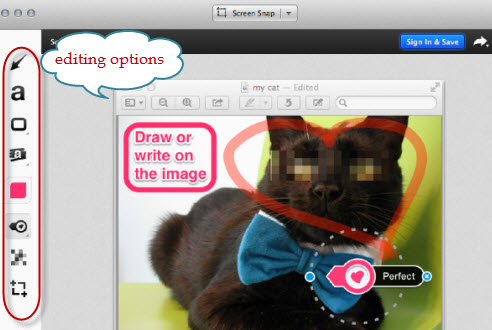- Compatibility: Windows 10/8.1/8/7/Vista and Mac OS X 10.8. And all the snipes are shared through iCloud between the two companion apps near instantaneously.) (iPhone app will not bid while it is background though, so it really should be used with this app or a dedicated old iPhone as a main 'server') Second mode To snipe in person, first go.
- Wesley Trent Snipes (born July 31, 1962) is an American actor, film producer, and martial artist.His prominent film roles include New Jack City (1991), White Men Can't Jump (1992), Passenger 57 (1992), Demolition Man (1993), U.S. Marshals (1998) and the Marvel Comics character Blade in the Blade film trilogy (1998–2004), The Expendables 3 (2014) and for his role on The Player (2015).
- However, there are simpler peripheral configuration apps such as Key Manager and X-Mouse Button Control for Windows and ControllerMate for Mac. Our take The third iteration of Razer Synapse is as impressive as the previous two, with a clean interface and higher focus on privacy.
Home > Research Projects and Centers > Center for Regional Heritage Research > Index of Texas Archaeology > Vol.
Snipping Tool is one of the built-in application for Mac OS X. By default, the app is located at /Applications/Utilities directory. To access the app, click on Finder icon in dock and select Applications. Then, navigate to Utilities folder and double click on new Snipping Tool icon.
Article Title
Authors

Agency
Journal of Northeast Texas Archeology
DOI
https://doi.org/10.21112/.ita.2017.1.58
Abstract
The Snipes site (41CS8) was excavated by Jelks in 1952 as part of the River Basins Surveys (RBS) program administered by the Smithsonian Institution in cooperation with the National Park Service, the U.S. Army Corps of Engineers, and the Bureau of Reclamation. Snipes was one of three sites excavated by the RBS prior to the inundation of a large part of the lower Sulphur River valley by Texarkana Reservoir, now Lake Wright Patman. The Snipes site was apparently occupied during at least some part of the Woodland period (ca. 500 B.C.- A.D. 800), mainly during the latter part of the period, and can be considered a component of the Fourche Maline Culture on the basis of the artifacts recovered from both habitation archaeological deposits and burial features. Other artifacts in the collection attest to the use of the Snipes site during Late Archaic and post-A.D. 900 ancestral Caddo times, as we will discuss below.
The site was estimated to cover ca. 6-7 acres of an upland landform about 1.6 km south of the Sulphur River, and was marked by a scatter of lithic artifacts, mussel shell, animal bones, charcoal, pottery sherds, etc. Excavations were done in a series of 5-ft. squares dispersed across a 300 x 200 ft. area; according to Jelks, “additional squares were opened adjacent to the most productive test squares.” The archaeological deposits ranged from ca. 8-38 cm in thickness from the surface, and had been well disturbed by plowing. Apparent midden deposits marked by “a great deal of carbon and grease” were identified in several parts of the excavations.
During the work at the site by Jelks, nine prehistoric burials were excavated there, including three (Burials 7-9) that were discovered an unknown distance northeast of Burials 1-6 during the last round of work at the site. Jelks reported that traces of human remains from adults of unknown sex were present in Burials 6 and 7, but failed to mention if such was the case for Burials 8 and 9. However, since Burial 8 was reported to have contained two individuals, and the orientation of the heads was recorded, human remains (again, probably from adults, although not noted) were obviously preserved in this burial as well, but apparently not recovered. For Burial 9, Jelks simply noted that preservation “was poor.”
Burials 6, 7, and 8 contained individuals that were placed in graves in an extended supine (i.e., on their back) position. Burial 8 had two individuals in extended supine position. The position of the deceased individual in Burial 9 was not recorded. Burial 6 had a Coles Creek Incised, var. Stoner bowl by the right shoulder of the deceased, and one small bowl each had been placed as a funerary offering in Burials 7-9; in two instances, the small bowls were by the left shoulder of the deceased. Two other vessels were funerary offerings in Burial 1 and a separate burial feature excavated by I. B. (Bogey) Price after the main RBS investigations.
Cite this Record
Sitters, Julian A. and Perttula, Timothy K. (2017) 'Another Look at the Snipes Site (41CS8) on the Sulphur River, Cass County, Texas,' Index of Texas Archaeology: Open Access Gray Literature from the Lone Star State: Vol. 2017, Article 58. https://doi.org/10.21112/.ita.2017.1.58
ISSN: 2475-9333
Available at: https://scholarworks.sfasu.edu/ita/vol2017/iss1/58
Creative Commons License
This work is licensed under a Creative Commons Attribution 4.0 License.
Included in
Snipes Mac Os 11
American Material Culture Commons, Archaeological Anthropology Commons, Environmental Studies Commons, Other American Studies Commons, Other Arts and Humanities Commons, Other History of Art, Architecture, and Archaeology Commons, United States History Commons
COinSTell us how this article helped you.
Snipes Mac Os Download
To view the content in your browser, please download Adobe Reader or, alternately,
you may Download the file to your hard drive.
Snipes Mac Os Catalina
NOTE: The latest versions of Adobe Reader do not support viewing PDF files within Firefox on Mac OS and if you are using a modern (Intel) Mac, there is no official plugin for viewing PDF files within the browser window.